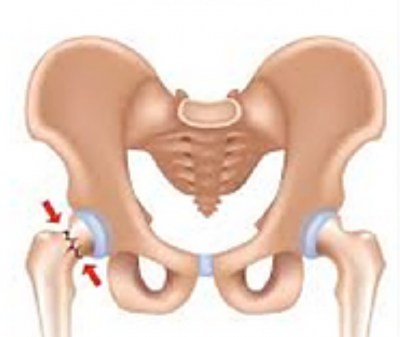Hip Fractures
The hip joint is a “ball and socket” joint where the head of the thigh bone (femur) forms the “ball” and the pelvis bones form the “socket” part.
Hip fractures occur at the upper part of the femur (thigh bone).
These types of fractures are common in the elderly following a fall. In younger patients these types of fractures happen after high-energy trauma accidents.

Symptoms of Hip Fracture
- Pain in the groin/thigh
- Being unable to stand or get up
- Foot turning out or in on the affected leg
- Shortening of the leg on the fracture side
Diagnosing Hip Fractures
Trauma and Hip specialists can diagnose hip fractures by taking a history of what happened, performing a physical examination and getting x-rays. Sometimes CT or MRI scans may be needed to show a hip fracture.
Treatment of Hip Fractures
Traction treatment may be an option for patients who are not medically fit enough for an operation. This is a non-operative technique where weights are used to help correct the position of the broken bones until they heal.
Surgical treatment options vary on the exact location and type of fracture.
- The Trauma Specialist will recommend the appropriate operation. These include the following:
- Intramedullary nail – a metal rod inside the bone canal and through the fracture to stabilise the fracture.
- Hip hemiarthroplasty – metal implant to replace the femur part of the hip joint.
- Plates and screws – to hold broken bones in position to allow healing.
- Total hip replacement – replaces the ball and socket of the hip with metal and plastic (polyethylene).

Rehabilitation
A hip fracture is a big injury and the surgery is just the start of the recovery process. Physiotherapy exercises are crucial to rehabilitate as quickly as possible in order to return to activities of daily living. Patients who sustain this injury may benefit from a consultation with our expert Orthogeriatric specialist service that offer a comprehensive falls prevention service. This can involve looking into possible causes of the fall in the first place, to minimise the chance of further falls occurring.
Surrey Orthopaedic Clinic Hip Fractures Specialists:




